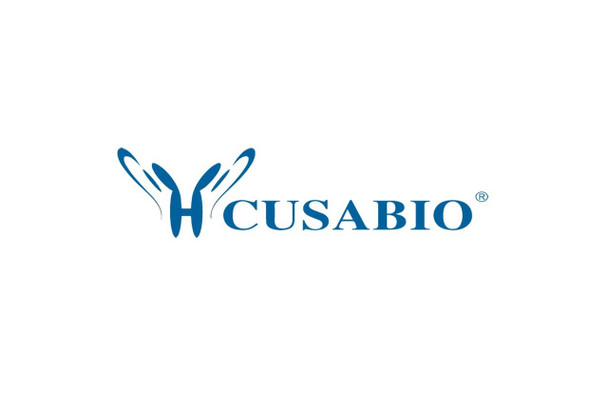Cusabio Human Recombinants
Recombinant Human Centrosomal protein of 63KDA (CEP63) | CSB-EP839376HU
- SKU:
- CSB-EP839376HU
- Availability:
- 13 - 23 Working Days
Description
Recombinant Human Centrosomal protein of 63KDA (CEP63) | CSB-EP839376HU | Cusabio
Alternative Name(s): CEP63Centrosomal protein of 63 kDa; Cep63
Gene Names: CEP63
Research Areas: Cell Biology
Organism: Homo sapiens (Human)
AA Sequence: MEALLEGIQNRGHGGGFLTSCEAELQELMKQIDIMVAHKKSEWEGRTHALETCLKIREQELKSLRSQLDVTHKEVGMLHQQVEEHEKIKQEMTMEYKQELKKLHEELCILKRSYEKLQKKQMREFRGNTKNHREDRSEIERLTAKIEEFRQKSLDWEKQRLIYQQQVSSLEAQRKALAEQSEIIQAQLVNRKQKLESVELSSQSEIQHLSSKLERANDTICANELEIERLTMRVNDLVGTSMTVLQEQQQKEEKLRESEKLLEALQEEKRELKAALQSQENLIHEARIQKEKLQEKVKATNTQHAVEAISLESVSATCKQLSQELMEKYEELKRMEAHNNEYKAEIKKLKEQILQGEQSYSSALEGMKMEISHLTQELHQRDITIASTKGSSSDMEKRLRAEMQKAEDKAVEHKEILDQLESLKLENRHLSEMVMKLELGLHECSLPVSPLGSIATRFLEEEELRSHHILERLDAHIEELKRESEKTVRQFTALK
Source: E.coli
Tag Info: N-terminal 6xHis-SUMO-tagged
Expression Region: 1-495aa
Sequence Info: Full Length of Isoform 3
MW: 73.9 kDa
Purity: Greater than 90% as determined by SDS-PAGE.
Relevance: Required for normal spindle assbly. Plays a key role in mother-centriole-dependent centriole duplication, through centrosomal recruitment of CEP152. Also recruits CDK1 to centrosomes. Plays a role in DNA damage response. Following DNA damage, such as double-strand breaks (DSBs), is roved from centrosomes; this leads to the inactivation of spindle assbly and delay in mitotic progression.
Reference: Complete sequencing and characterization of 21,243 full-length human cDNAs.Ota T., Suzuki Y., Nishikawa T., Otsuki T., Sugiyama T., Irie R., Wakamatsu A., Hayashi K., Sato H., Nagai K., Kimura K., Makita H., Sekine M., Obayashi M., Nishi T., Shibahara T., Tanaka T., Ishii S. , Yamamoto J., Saito K., Kawai Y., Isono Y., Nakamura Y., Nagahari K., Murakami K., Yasuda T., Iwayanagi T., Wagatsuma M., Shiratori A., Sudo H., Hosoiri T., Kaku Y., Kodaira H., Kondo H., Sugawara M., Takahashi M., Kanda K., Yokoi T., Furuya T., Kikkawa E., Omura Y., Abe K., Kamihara K., Katsuta N., Sato K., Tanikawa M., Yamazaki M., Ninomiya K., Ishibashi T., Yamashita H., Murakawa K., Fujimori K., Tanai H., Kimata M., Watanabe M., Hiraoka S., Chiba Y., Ishida S., Ono Y., Takiguchi S., Watanabe S., Yosida M., Hotuta T., Kusano J., Kanehori K., Takahashi-Fujii A., Hara H., Tanase T.-O., Nomura Y., Togiya S., Komai F., Hara R., Takeuchi K., Arita M., Imose N., Musashino K., Yuuki H., Oshima A., Sasaki N., Aotsuka S., Yoshikawa Y., Matsunawa H., Ichihara T., Shiohata N., Sano S., Moriya S., Momiyama H., Satoh N., Takami S., Terashima Y., Suzuki O., Nakagawa S., Senoh A., Mizoguchi H., Goto Y., Shimizu F., Wakebe H., Hishigaki H., Watanabe T., Sugiyama A., Takemoto M., Kawakami B., Yamazaki M., Watanabe K., Kumagai A., Itakura S., Fukuzumi Y., Fujimori Y., Komiyama M., Tashiro H., Tanigami A., Fujiwara T., Ono T., Yamada K., Fujii Y., Ozaki K., Hirao M., Ohmori Y., Kawabata A., Hikiji T., Kobatake N., Inagaki H., Ikema Y., Okamoto S., Okitani R., Kawakami T., Noguchi S., Itoh T., Shigeta K., Senba T., Matsumura K., Nakajima Y., Mizuno T., Morinaga M., Sasaki M., Togashi T., Oyama M., Hata H., Watanabe M., Komatsu T., Mizushima-Sugano J., Satoh T., Shirai Y., Takahashi Y., Nakagawa K., Okumura K., Nagase T., Nomura N., Kikuchi H., Masuho Y., Yamashita R., Nakai K., Yada T., Nakamura Y., Ohara O., Isogai T., Sugano S.Nat. Genet. 36:40-45(2004)
Storage: The shelf life is related to many factors, storage state, buffer ingredients, storage temperature and the stability of the protein itself. Generally, the shelf life of liquid form is 6 months at -20?/-80?. The shelf life of lyophilized form is 12 months at -20?/-80?.
Notes: Repeated freezing and thawing is not recommended. Store working aliquots at 4? for up to one week.
Function: Required for normal spindle assembly. Plays a key role in mother-centriole-dependent centriole duplication; the function seems also to involve CEP152, CDK5RAP2 and WDR62 through a stepwise assembled complex at the centrosome that recruits CDK2 required for centriole duplication. Reported to be required for centrosomal recruitment of CEP152; however, this function has been questioned
Involvement in disease: Seckel syndrome 6 (SCKL6)
Subcellular Location: Cytoplasm, cytoskeleton, microtubule organizing center, centrosome, Cytoplasm, cytoskeleton, microtubule organizing center, centrosome, centriole, Cytoplasm, cytoskeleton, microtubule organizing center, centrosome, centriolar satellite
Protein Families: CEP63 family
Tissue Specificity:
Paythway:
Form: Liquid or Lyophilized powder
Buffer: If the delivery form is liquid, the default storage buffer is Tris/PBS-based buffer, 5%-50% glycerol. If the delivery form is lyophilized powder, the buffer before lyophilization is Tris/PBS-based buffer, 6% Trehalose, pH 8.0.
Reconstitution: We recommend that this vial be briefly centrifuged prior to opening to bring the contents to the bottom. Please reconstitute protein in deionized sterile water to a concentration of 0.1-1.0 mg/mL.We recommend to add 5-50% of glycerol (final concentration) and aliquot for long-term storage at -20?/-80?. Our default final concentration of glycerol is 50%. Customers could use it as reference.
Uniprot ID: Q96MT8
HGNC Database Link: HGNC
UniGene Database Link: UniGene
KEGG Database Link: KEGG
STRING Database Link: STRING
OMIM Database Link: OMIM









